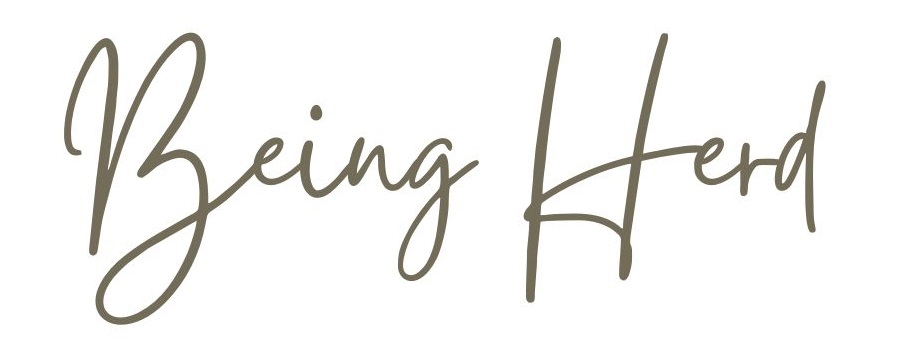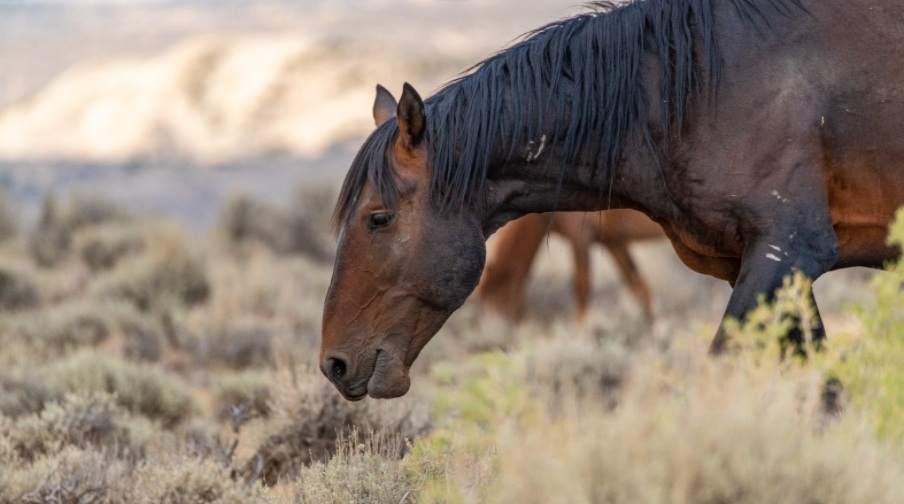Let’s talk about something that’s easy to overlook when we think about our horses at home: Who’s actually leading your herd?
In domestic herds, there’s always at least one horse that steps up to take on the role of leader. It could be a confident gelding or a strong-willed mare—someone who seems to keep the group together, maintains order, or offers a sense of protection. But here’s the thing: even though these horses fill a leadership role, they’re often doing it without the depth of experience or natural preparation that a true herd leader—like a wild stallion—would have.
And that raises an important question: Are they really meant to lead?
How Wild Stallions Become Leaders: A Journey That Takes Years 🌿
In the wild, stallions don’t just stumble into leadership—it’s a long journey of learning, shaped by time, experience, and character.
It begins when the young colt is about six months old. That’s when his learning truly starts, and his father becomes his teacher—both directly and indirectly. The stallion doesn’t just show leadership through force or control; he teaches through subtle interactions, role modeling, and quiet authority. The young colt watches how his father navigates the herd, offers protection, and makes decisions that keep the group safe and stable.
But even after years of learning, the young stallion doesn’t immediately take over leadership. Around the age of three, he leaves his family herd—but he’s still far from ready to lead. Instead, he joins a bachelor group, where the real education continues.
In the bachelor herd, young stallions test themselves, learn social skills, and continue to grow—both physically and mentally. They watch older stallions, learn from the dynamics of other herds, and gain valuable experience through interaction and observation. It can take up to two more years—or even longer—before a stallion is truly ready to form his own herd.
And it’s not just about learning. Character plays an enormous role in determining whether a stallion will even want to lead.🌟 Not every horse is naturally inclined to take on the responsibility of leadership. For instance, a fire-type horse might be spirited, charismatic, and full of energy, but leadership isn’t always their calling. On the other hand, wood-type horses—bold, competitive, and naturally driven—often end up leading larger herds, thanks to their assertive and confident nature.
Age, character, experience—all of these factors shape the kind of leader a stallion becomes, and the size and structure of his herd reflect that balance.
Why Domestic Herds Can’t Replicate Wild Leadership 🏡
Now, let’s bring this back to our horses at home. In domestic settings, every herd still needs someone to take the lead. And since we’re the ones putting these herds together—often mixing breeds, ages, and temperaments, sometimes even horses that might never choose each other in the wild—the leadership dynamic doesn’t have the luxury of forming naturally.
The horse that steps up to lead in a domestic herd hasn’t spent years learning from a seasoned stallion. They haven’t had the slow, natural progression of leaving their birth herd, joining a bachelor group, and gradually growing into the responsibility of leadership. They lead because someone has to—whether they’re ready or not.
In many cases, especially when a mare or a younger horse becomes the de facto leader, it’s not necessarily because they wants to lead – maybe they’re just the best choice among the ones who ‘could’ do it – or it’s simply because no one else will. Domestic herds don’t offer the time, space, or natural social structure for horses to develop their leadership skills in the same way wild stallions do. The herd members change, the relationships are often shallow, and the depth of trust that comes from years of living together just isn’t there.
So, Who’s Leading Your Herd? And Are They the Right Fit 🤔?
The question is: Is the horse leading your herd truly the best leader for the job?
In a domestic herd, the answer is often no—not because your horse isn’t capable, but because they haven’t had the chance to learn or develop naturally. They’re doing the best they can in an environment that doesn’t reflect the complexities of wild horse society.
And here’s where we, as humans, have a remarkable opportunity.
The Human Advantage: You Can Be the Leader Your Horse Trusts 💡
Unlike domestic horses, who often inherit leadership by circumstance, we have the advantage of choosing to learn what true leadership looks like—by observing the natural, balanced leadership of wild stallions.
We can study how a wild stallion moves, how he leads with presence and quiet confidence, and how his authority is never about force but about offering clarity, stability, and protection. Even the lead stallions don’t control their herd—they create a sense of security that the herd chooses to follow.
This is where character matters for us, too. Just like horses, not every person naturally feels drawn to lead—but that doesn’t mean leadership can’t be developed. By understanding your horse’s unique character and recognizing what they need from a leader, you can grow into a role that feels natural for both of you.
And the beauty of this process? Your horse has the freedom to follow you voluntarily—just as wild horses choose to follow the stallions they trust most.
What We Do in Being Herd: Learning to Lead Naturally
This journey of understanding leadership—how wild stallions truly lead and how we can embody that same presence—is at the heart of what we explore in Being Herd.
We don’t focus on control, and we don’t rely on dominance. Instead, we dive deep into what true leadership looks like, starting with the natural behavior of wild stallions. You’ll learn how leadership develops over time in the wild, how a stallion’s character influences his ability to lead, and—most importantly—how you can begin to lead your own horse in a way that feels natural and respectful.
You’ll also discover how your horse’s character—whether they’re a bold wood type, a sensitive water horse, or a spirited fire type—shapes what they need from you. Leadership isn’t one-size-fits-all, and understanding your horse’s unique needs allows you to offer the clarity and stability they’re looking for.
This isn’t about quick fixes. Just like a wild stallion takes years to grow into his role, developing authentic leadership with your horse is a gradual, meaningful process. But when you get there—when your horse begins to follow you out of trust, not habit—everything changes ✨.
You’ll feel the shift. And your horse will, too.
If you’re curious to dive deeper into this topic, I’ve made a YouTube video that explores exactly this—who’s really leading your herd at home, and how you can become the leader your horse naturally wants to follow. You can 🎥 watch it here.
And if you’re ready to take this journey further, the Being Herd Membership offers a space to learn, grow, and discover what true leadership looks like through the lens of wild horse wisdom. You’ll find practical tools, deep insights, and a supportive community to help you develop authentic leadership skills your horse will trust. Learn more about Being Herd here.


Recent Comments